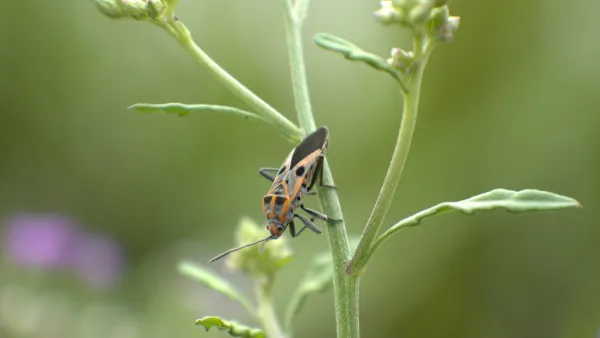Goldspotted oak borers (GSOB) are invasive pests that are harming and killing oak trees across San Diego, Riverside, Orange, and Los Angeles counties.

The goldspotted oak borer (GSOB) is a devastating beetle currently spreading through Southern California's oak trees, causing widespread destruction. As reported in this article by Lila Seidman, the beetle's presence has been confirmed in parts of Los Angeles County, including East Canyon, Rice Canyon, Whitney Canyon, and recently in Silverado Canyon. Ron Durbin, forestry division chief for the Los Angeles County Fire Department, compares the beetle's spread to stage-four cancer, highlighting its rapid and deadly impact since its discovery in San Diego County in 2008, where it has killed more than 80,000 trees. The beetle targets oaks, particularly the coast live oak, canyon live oak, and California black oak, severely disrupting the ecosystem and increasing fire hazards due to dead, dry trees.
The L.A. County Board of Supervisors is taking action to combat this threat by exploring a state of emergency declaration and seeking additional resources to address the infestation. The primary concern is the potential spread to the oak-rich Santa Monica Mountains, which are home to around 600,000 oak trees. The trees' demise would result in the loss of shade, wildlife habitat, and significant fire hazards. Eradication of the beetle is not possible, but efforts focus on slowing its spread, such as regulating firewood movement, treating trees with systemic pesticides, and exploring alternative methods like limewash and prescribed burns.
Volunteers and organizations, such as Earthroots Field School, are actively involved in mitigating the beetle's impact. Researchers are investigating management techniques, including indigenous cultural burning practices and heat-treating firewood to prevent further infestations. These efforts aim to buy time and develop better treatment methods, emphasizing the urgent need for proactive measures to protect California's oak forests from current and future invasive pests exacerbated by climate change. The fight against the GSOB underscores the broader importance of effective and coordinated responses to invasive species threatening ecosystems statewide.
FULL STORY: Tree-killing beetle is on a death march through Southern California’s oaks. Can it be stopped?

National Parks Layoffs Will Cause Communities to Lose Billions
Thousands of essential park workers were laid off this week, just before the busy spring break season.

Retro-silient?: America’s First “Eco-burb,” The Woodlands Turns 50
A master-planned community north of Houston offers lessons on green infrastructure and resilient design, but falls short of its founder’s lofty affordability and walkability goals.

Delivering for America Plan Will Downgrade Mail Service in at Least 49.5 Percent of Zip Codes
Republican and Democrat lawmakers criticize the plan for its disproportionate negative impact on rural communities.

Test News Post 1
This is a summary

Test News Headline 46
Test for the image on the front page.

Balancing Bombs and Butterflies: How the National Guard Protects a Rare Species
The National Guard at Fort Indiantown Gap uses GIS technology and land management strategies to balance military training with conservation efforts, ensuring the survival of the rare eastern regal fritillary butterfly.
Urban Design for Planners 1: Software Tools
This six-course series explores essential urban design concepts using open source software and equips planners with the tools they need to participate fully in the urban design process.
Planning for Universal Design
Learn the tools for implementing Universal Design in planning regulations.
EMC Planning Group, Inc.
Planetizen
Planetizen
Mpact (formerly Rail~Volution)
Great Falls Development Authority, Inc.
HUDs Office of Policy Development and Research
NYU Wagner Graduate School of Public Service





























